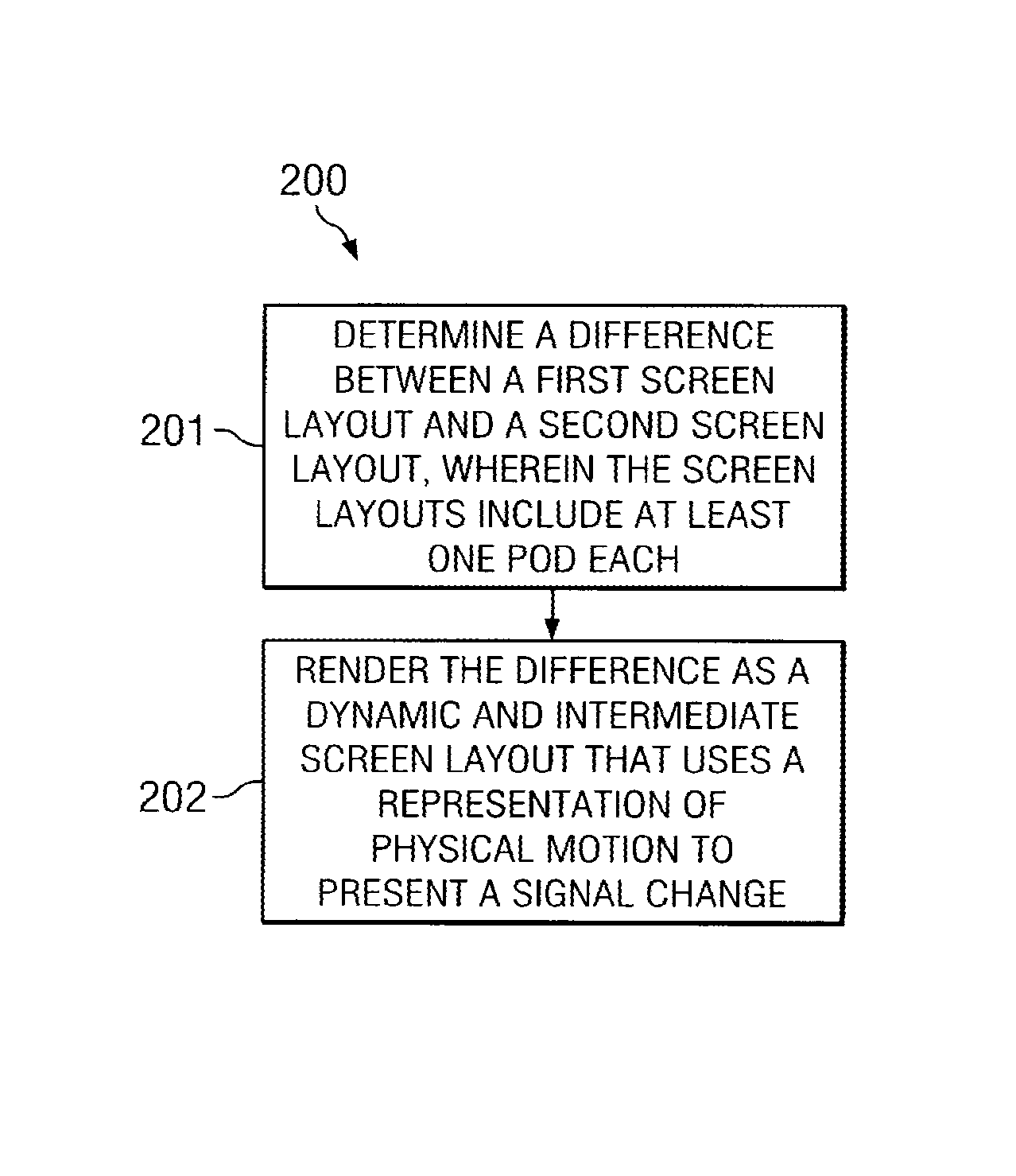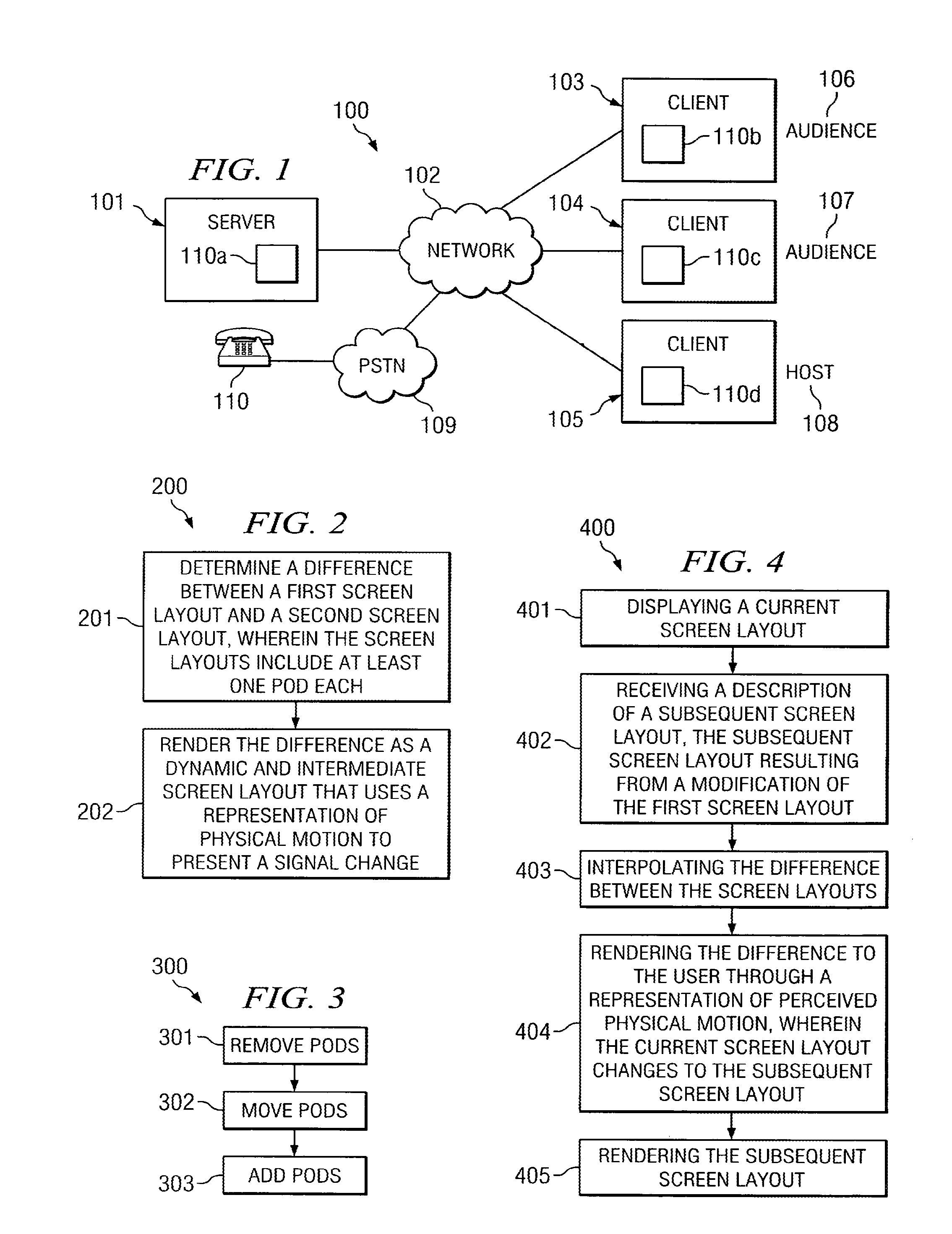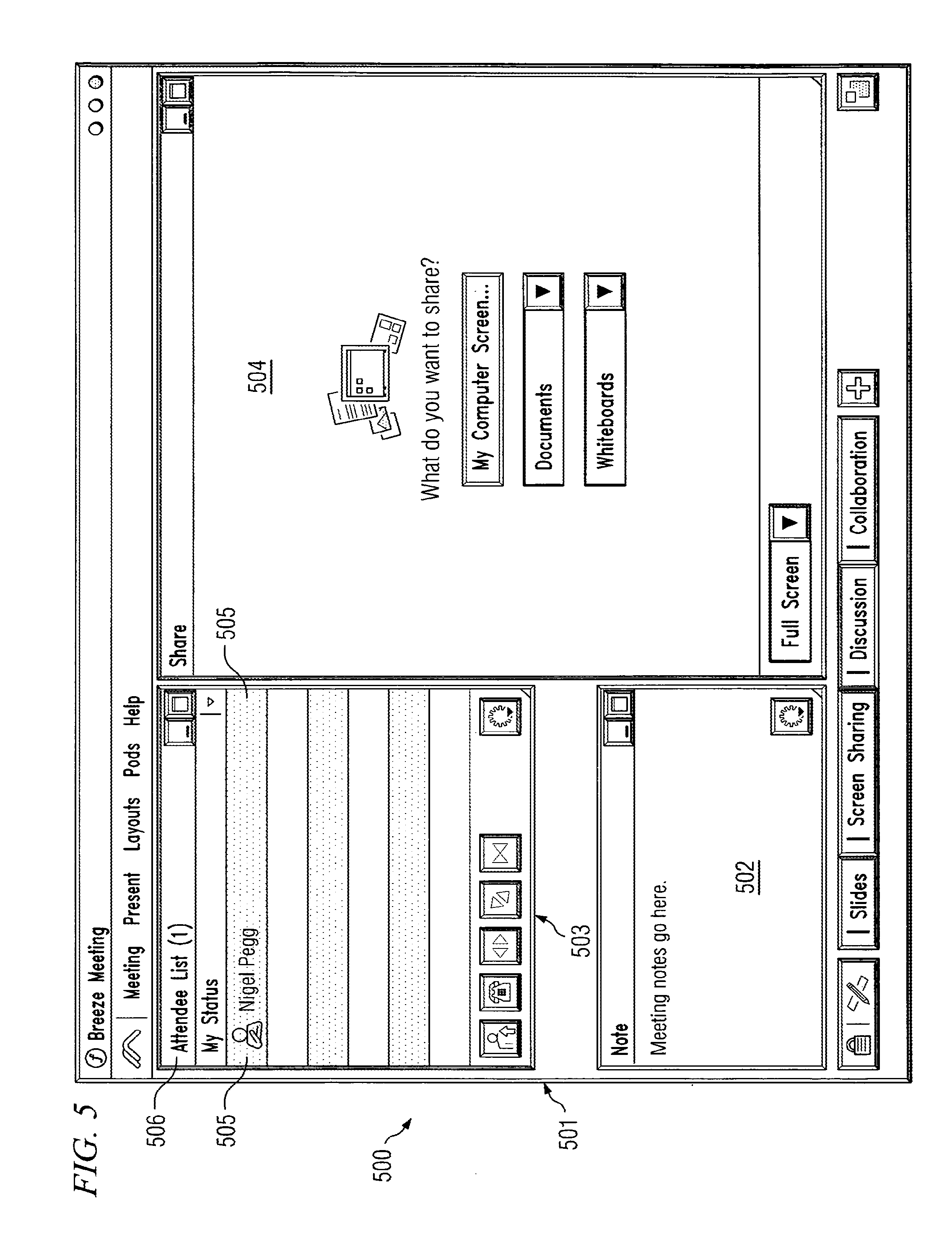Visual interface element transition effect
a transition effect and visual interface technology, applied in the field of graphical user interfaces, can solve the problems of user distraction from the meeting, bored audience members drifting away, abrupt changes may be jarring, etc., and achieve the effect of preventing abrupt or startling transitions
- Summary
- Abstract
- Description
- Claims
- Application Information
AI Technical Summary
Benefits of technology
Problems solved by technology
Method used
Image
Examples
Embodiment Construction
[0019]FIG. 1 illustrates exemplary system 100, according to one embodiment of the present invention. System 100 includes server computer 101 separated from client computers 103-105 by network 102. Network 102 may be a Local Area Network (LAN), Wide Area Network (WAN), the Internet, or the like. Client computers 103-105 are associated with users 106-108. Users 106 and 107 may each be one or more intended audience members for a presentation conducted using system 100. Host user 108 may be one or more intended presenters or moderators for the presentation.
[0020]Each of computers 101 and 103-105 execute computer application 110, which is adapted to allow computers 101 and 103-105 to perform functions according to the present invention. In this particular embodiment, computer application 110 is a web-based personal interaction meeting space, such as BREEZE®, available from Macromedia, Inc., of San Francisco, Calif., and server application 110a is different than client applications 110b-d...
PUM
 Login to View More
Login to View More Abstract
Description
Claims
Application Information
 Login to View More
Login to View More - R&D
- Intellectual Property
- Life Sciences
- Materials
- Tech Scout
- Unparalleled Data Quality
- Higher Quality Content
- 60% Fewer Hallucinations
Browse by: Latest US Patents, China's latest patents, Technical Efficacy Thesaurus, Application Domain, Technology Topic, Popular Technical Reports.
© 2025 PatSnap. All rights reserved.Legal|Privacy policy|Modern Slavery Act Transparency Statement|Sitemap|About US| Contact US: help@patsnap.com



